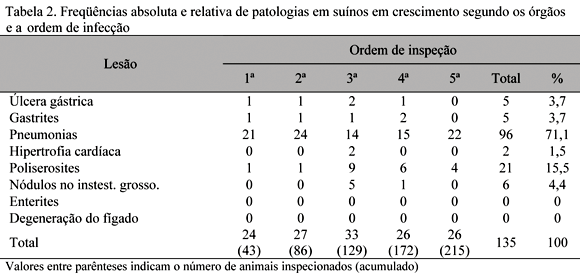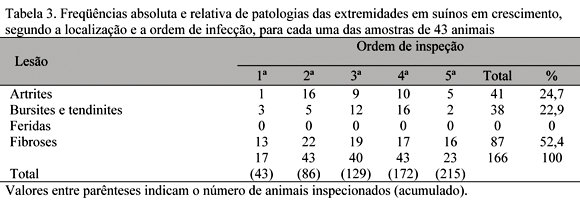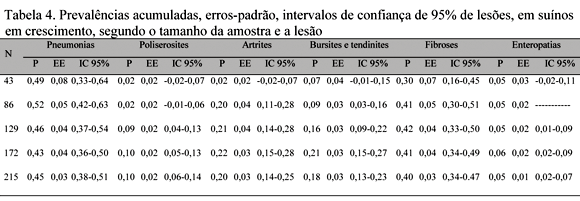The prevalence of different pathologies as an indicator of health problems in a particular population by means of slaughterhouse monitoring of growing pigs was determined. The work was carried out in an indoor intensive farrow to finish swine farm during 9 weeks. The prevalence of diseases was determined by means of clinical and pathological diagnosis. For the slaughterhouse inspection, five groups of 43 pigs each weighting up to 19kg, considered as poor performers, were put together. These animals were sent to the slaughterhouse and were observed for the presence or absence of skin and joint lesions of arms and legs and also lesions of serous membranes and parenchimal organs. An estimative with a confidence interval level of 95% was performed on cumulated prevalence in each monitoring session for 43, 86, 129, 172 and 215 animals. Annual prevalence from clinical and pathological diagnosis and 9-week-period had correlations (r=0.99; P<0.0001) and correspondence with slaughterhouse observations. In conclusion, samplings in alternate weeks of three groups of 43 pigs seem to be a good indicator of pathologies affecting growing swines, even those of very low prevalence or highly lethal.
swine; slaughterhouse; prevalence; clinic-pathological diagnosis




